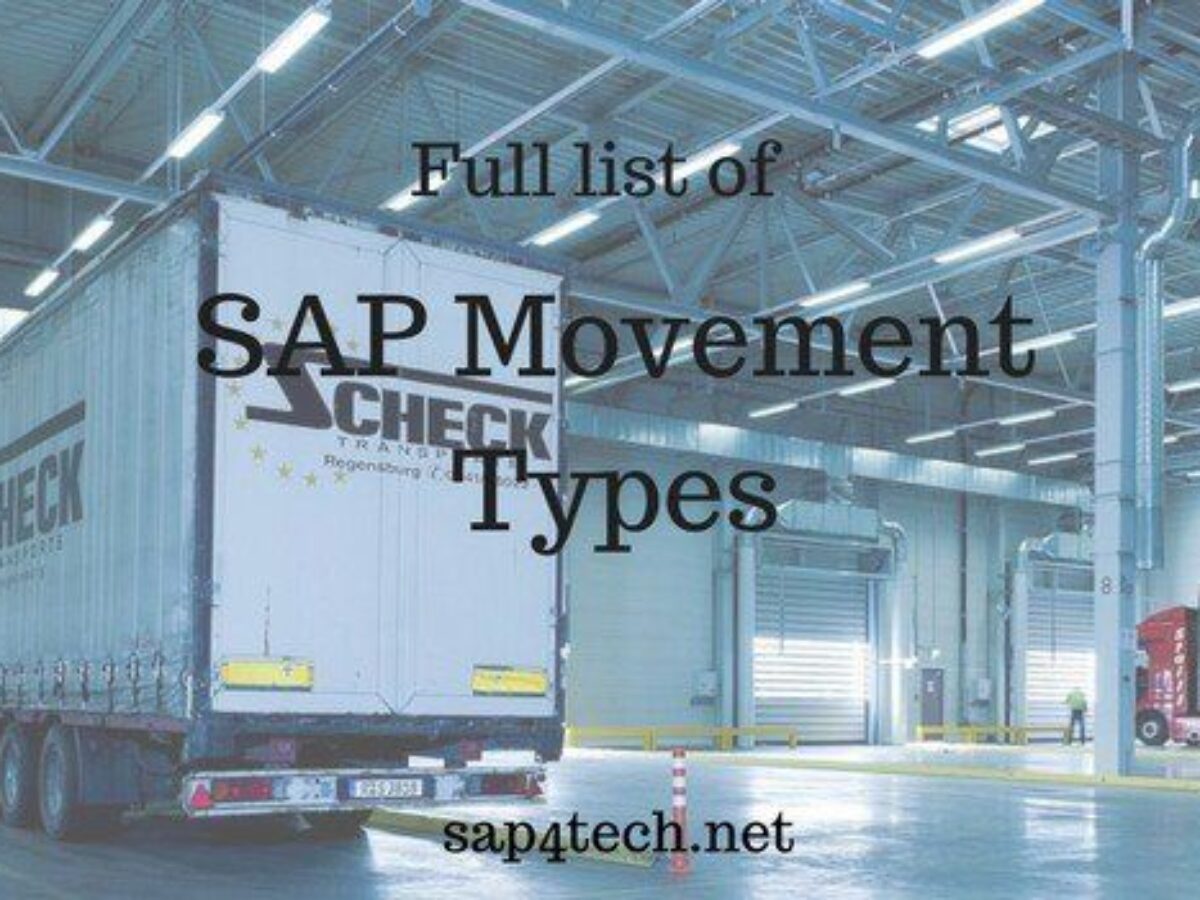

- #Sap movement type 651 full#
- #Sap movement type 651 free#
SAP has described the problem with this slide: When the return order credit memo is posted, both Revenue and COGS are reversed correctly in costing based CO-PA.
#Sap movement type 651 free#
Later when the goods are transferred to free stock, the COGS are reversed but the connection to the original profitability segment of the return sales order is lost – hence the correct profitability segment of account based CO-PA can no longer be determined correctly. This means that the COGS are NOT reversed in account based CO-PA (FI) when the GR from return order delivery is posted Returned blocked stock with movement type 651 is non-valuated. If the goods are OK and may be resold, the goods are moved to free stock. This inventory is blocked for outbound delivery, which makes sense from a business point of view as it is not desirable to make returned goods immediately available for sale and delivery until it can be verified that it can ACTUALLY be sold again or whether it has to undergo repair, refurbishment, or it has to be scrapped. When a return order is received with the standard configuration (model company, best practice implementation) the system will use standard movement type 651 and receive the returned goods into non-valuated return blocked stock. In account based CO-PA however the challenge has historically been different. Important issue was to make sure that the settings in configuration transaction KE4W where the appropriate settings for return order billing types should be set – example from IDES system In the return order process costing based CO-PA has always been quite easy to handle. In this blog I will discuss the special case of return order processing and some important configuration considerations. However some new challenges related to return order processes have emerged. With S/4HANA and SAP’s recommendation to use account based CO-PA the challenges with costing based CO-PA does not exist for customers that choose to only implement account based CO-PA. #Sap movement type 651 full#
On the other hand, the advantage of the full synchronization of COGS and Revenue in costing based CO-PA is of course that the margin analysis and calculation of various types of contribution margins will be more accurate. In the general ledger COGS is posted upon goods issue for delivery and hence when there is a time lag between goods issue and billing there may be a difference in COGS in general ledger and costing based CO-PA. In costing based CO-PA the COGS is posted together with the invoice, making sure that COGS and revenue is always in sync. One of the challenges in the reconciliation of costing based CO-PA and FI has been the reconciliation of the posting of COGS. A majority of these challenges were related to the use of costing-based CO-PA and the need to reconcile with or account for differences between costing-based CO-PA and the General Ledger/FI. In pre-S/4HANA editions of SAP ERP the special processes in sales (Return order, Credit notes, Rebate agreements, intercompany billing, MTO etc.) were always a bit of a challenge when updating costing based CO-PA.





 0 kommentar(er)
0 kommentar(er)
